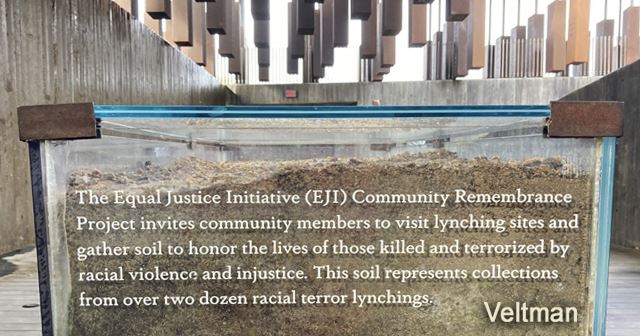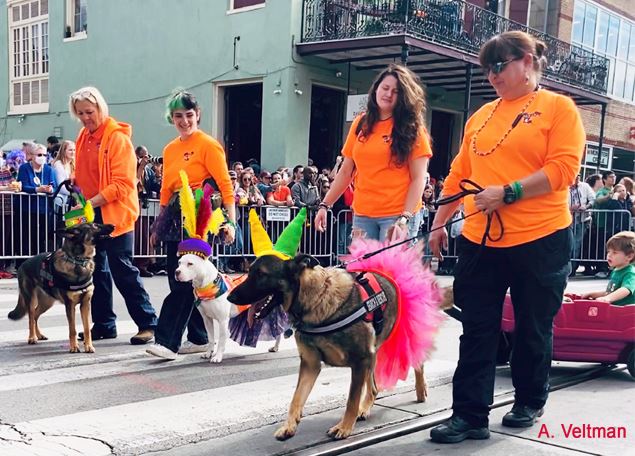P e a c e a n d U n d e r s t a n d i n g |
Feature Story
| Is it possible to put Servas values at the forefront of your travels whether or not you are staying with Servas hosts, whether or not you are traveling abroad? We believe it both possible and enriching to do so. Here is a trip report that shows how we raised our cross-cultural awareness and also had lots of fun without leaving the USA. |
"What fascinates me most about history is how it helps us make sense of the present. Becoming aware of it can then empower us to be more than passive, unwitting participants in events as they unfold around us... It’s one thing to read about history in a book and quite another to find yourself physically present in a space where a certain event occurred, where the walls around you and the land beneath your feet bear witness to what happened and hold palpable energy that propels you forward toward a greater understanding of your own place in time." Bree Newsome Bass in forward to US Civil Rights Trail by Deborah D. Douglas
On two recent trips to parts of the US Southeast, we felt that same propelling energy as we gained insights into a culture and a history much closer to home. We also let the good times roll: opportunities abound for both kinds of travel—the somber and the joyous. We hope that many fellow Servas members will travel on the U.S. Civil Rights Trail and tell its stories. Our own country has beautiful cultures and traditions that enrich our lives, and in following the Servas mission, we have enjoyed increasing our awareness of them. New Orleans overflows with parades, joyful music, gourmet meals and regional dishes often served with creative cocktails, and museums full of amazing Mardi Gras costumes. This charm of a city and its friendly inhabitants offer more possibilities for fun and entertainment than any visitor has time for. Our favorite was the walking parade of the Krewe of Barkus—dogs and their owners dressed up as kings, ballerinas and whatnot trying to move together in one direction with costumes in place while doing important dog activities like going in circles sniffing each other’s rear ends, chasing treats, and greeting the curbside onlookers. In two recent trips to the city, we added a sprinkling of history to the mix. Here are a few things we enjoyed that you might like to explore:
Hidden History Tours: Leon Waters (“Mr. Leon”) leads walking and driving tours in New Orleans, highlighting events related to the civil rights struggle.He is a lifelong activist and historian, and a leader of several nonprofits. We appreciated his depth of knowledge, his patient answers to our questions, and his inclusion of a stop for “naked” (no powdered sugar) beignets at the legendary Café du Monde—the best fried dough ever! (If no tours are scheduled, write or call to request a custom tour. Mr. Leon is very accommodating.) | A memorial to the 1811 German Coast uprising of slaves The Whitney Plantation: About an hour out of New Orleans, this is the only restored plantation that focuses on the experience of enslaved people, including their lives after Emancipation as indentured field hands. We also learned that enslaved, indentured and imprisoned African-Americans built many levees, streets, railroads, and buildings all over the U.S.—including the original wall of New York’s Wall Street. Quotes supplied by the Federal Writers Project provide context and insight.1 In addition to preserved and rebuilt historic buildings, the plantation displays several memorials; sculptures that offer space for reflection; a small indoor museum; and a gift shop with a large offering of books and beautiful, useful handmade items from cottage industries of African and African-American Communities We made a list of New Orleans restaurants, museums and sites—see TIPS AND RESOURCES below. These recommendations were provided by our friend Laura Livoti, who fell in love with the city and moved there in 2014. We also had a lovely time and many interesting discussions while staying with two wonderful Servas host couples, but that's a different story. Montgomery is about a 5-hour drive from New Orleans, and we were inspired to go there by the book U.S. Civil Rights Trail by Deborah D. Douglas—see TIPS AND RESOURCES below, which dedicates 34 pages to all aspects of visiting Alabama’s capital city. Here are our own top experiences: The Legacy Museum: From Enslavement to Mass Incarceration Opened in 2018, this museum is overwhelming both physically and emotionally, but its value can’t be overstated. Be prepared for many galleries of difficult and sad information from the transatlantic slave trade to domestic slave breeding, from lynching to mass incarceration, and recent examples of police brutality. Care was taken not to spring any disturbing imagery on anyone, so it’s completely your choice what and how much you want to know and see. It's important to spend enough time in the exhibits (4-8 hours). The museum is well organized and includes a theater in each section. We felt compelled to spend time absorbing and mourning the statements by victims, witnesses and newspaper reporters. We came to understand so much better what we had thought we already knew—for example, the direct connection between the Great Migration (1910–1970) and the epidemic of lynchings, which lasted until 1950. Terrorized individuals, families, and whole neighborhoods of Black Americans (appx. 6 million of them) left everything behind—sometimes with just minutes or hours to prepare—in the hope of living more peaceful and productive lives in northern cities or western states. Note: You are not allowed to bring food or beverage into the museum. Furthermore, no water is available inside the exhibit area and there are no lockers to store your own drinks. The only way to satisfy hunger or thirst is to depart the museum and re-enter through Security. There's a small eatery adjacent to the museum selling good food in bad Styrofoam (but no coffee in any kind of container!). You might want to plan a break at one of the restaurants or coffee shops within five or six blocks. | The National Memorial for Peace and Justice This is a beautiful place to reflect and pay respect to the thousands of people who fell victim to lynching. Both the museum and the memorial are the work of the Equal Justice Initiative, and admission to the Memorial is included in your ticket to the museum. The EJI has documented more than 4400 racial terror lynchings in the United States during the period between Reconstruction and 1950, though many more were never reported. As we stood in the memorial, looking at the names of so many men and women whose productive and creative lives were cut short in horrific ways, we thought about our own families’ legacies. We are both of European descent, one of us an immigrant, the other second generation. Our lives were shaped, both emotionally and economically, by what happened to our parents, grandparents, and great-grandparents. 
Our families’ own hardships were indeed trying, but in many respects, they pale at the comparison with what was presented in this space. And we got just a glimpse of the tribulations of many African American citizens of this country. Americans must understand how chattel slavery and its legacy have impacted society in all parts of the world, to the benefit of white citizens, and how its effects are lasting to the present day. More information: Time for a break from all the heaviness: The Hilltop Public House on 3 Goldthwaite Street offered us a few hours of lively discussions with the local crowd over good cocktails. It's a coffee shop by day and a bar at night, with one corner of the space used by a bike repair and sales business. If you go there, ask Rebecca if she has gotten her Servas membership yet. Airmen of Note The elite jazz band of the U.S. Air Force presents a free holiday concert in Montgomery every December. The band’s style is modeled after the big bands of yore, especially that of Glenn Miller who started a jazz ensemble when he himself was an airman during WWII. These highly skilled and well-rehearsed musicians are also great showmen. What a hoot! How lucky we were to catch this performance, quite by accident. With a flexible schedule and little advance research, you might be able to plan your own trip to coincide. We visit sites of great tragedies and injustices because we believe that we owe respect to those who suffered and died there, and as a reminder that history can repeat itself and we must understand the past to make good decisions for the future. The sadness that occasionally comes with this type of travel is a small price to pay. Our own country has beautiful cultures and traditions that can enrich our lives if we are exposed to them. What better way to travel than to follow the Servas mission?
Andrea Veltman and David Schwartz are long-time Servas members. They live in Oakland, California. |
TIPS AND RESOURCES |
New Orleans:
| The Book That Guided Us U.S. Civil Rights Trail – A Traveler’s Guide to the People, Places and Events That Made the Movement by Deborah D. Douglas, 2021 (Moon Publications) The U.S. Civil Rights Trail was created in 2018 to preserve and share the history of one of the most transformative times in America’s story. The trail crosses 15 predominately Southern states where pivotal battles for civil rights took place. Do you know the full spectrum of cultures that has shaped the United States? How do you present our diversity and the many schisms to your Servas guests and foreign hosts? Most white Americans have yet to reconcile our country’s history with its values. Such introspection is hard, but this travel guide makes the journey into this part of America’s history and geography as easy as it can be—and something to be proud of! It covers thirteen cities, from Charleston to Little Rock to Washington D.C., and it includes:
|
More to Read, See & Hear Excellent video about the major events and cities along the U.S. Civil Rights Trail Interview with Deborah Douglas, author of the U.S. Civil Rights Trail guidebook that we used. Clint Smith, author of How the World Is Passed. Interview of Clint Smith with Terry Gross on NPR’s Fresh Air: Homegoing by Ghanaian-American author Yaa Gyasi Born in Slavery: Slave Narratives from the Federal Writers’ Project, 1936 to 1938 Tainted by Racism: Is the Greatest Collection of Slave Narratives Tainted by Racism? Great Films & Documentaries Mississippi Burning on Kanopy (free with library card) In the Heat of the Night on Paramount Plus (and elsewhere) Self-Made on Netflix Ida B. Wells: A Passion for Justice on Kanopy The Black Panthers: Vanguard of the Revolution on PBS |

 Barkus Dogs - New Orleans, LA
Barkus Dogs - New Orleans, LA